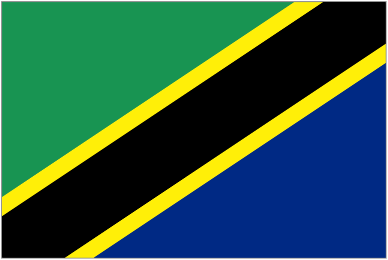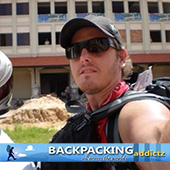- Population: 38.4 million (UN, 2005)
- Capital: Dodoma
- Area: 945,087 sq km (364,900 sq miles)
- Major languages: English, Swahili
- Major religions: Christianity, Islam
- Life expectancy: 46 years (men), 46 years (women) (UN)
- Monetary unit: 1 Tanzanian shilling = 100 cents
Backpacking in Tanzania
The United Republic of Tanzania is also hailed as “Lion Land,” and there’s a big Disney story with this. Arguably, the quintessential African Safari experience, this is the land that inspired the Disney animation, the Lion King. Besides the packs of lions that count to 40% of the whole world’s lion population (there are only 25,000 in the world), the stunning beauty of the Serengeti moved the filmmakers to take on the landscape as the set of the animation film that little did we know would be so historic and entrenched in the hearts of many, from the doggone nearby past and continuously as we speak. Everything about the movie rekindled childhoods that were lost in memory, and continues to give life lessons to the young of the succeeding generation as it once did us.
One must not overlook Tanzania’s contribution to this nostalgia and memory-rifting, for now we can never imagine the Lion King to be in another setting as the Serengeti. Remember that scene when Rafiki anointed Simba (which means “lion” in Swahili) and lifted him up to the Serengeti sun which we dwell in reverie? The sights, sounds, colours, landscape, jungles, and the famous sunset are distinctively Tanzania’s, and if you thought Disney’s created an idyllic backdrop for the movie, that was just a good doppelganger. Truth is, if gorillas are to Rwanda, lions are to Tanzania, and a whole bunch more. However, Tanzania is one of the hottest places in the world to see the Big Five. But, what the heck, “Hakuna matata!”
GEOGRAPHY
Tanzania (6 00 S, 35 00 E) in East Africa is a colossal landmass 947,300 km2 large, and faces the Indian Ocean like bordering countries Kenya and Mozambique. Tanzania is the world’s 31st largest country, its size comparable to Nigeria and a bit more than twice of California. Coastal plains line the coast, rolling inward to central plateaus. Highlands and mountains are copious in the north and south. The highest peak in Tanzania and in all of Africa is Kilimanjaro in the northeast of the country, 5,895m tall. The country is separated from the rest of Africa by the three largest lakes on the continent: Lake Victoria, the world’s 2nd largest freshwater lake (north); Lake Tanganyika, the world’s 2nd deepest lake (west); and Lake Nyasa (southwest).
CLIMATE
Tanzania has tropical, temperate, and arid climates varying on location and altitude. To the coast, it is tropical, thus typically hot and humid. In the mountainous areas, the climate is temperate. The hottest period is between months November and February, and the coldest, between May and August.
PEOPLE
Tanzanians are estimated at 41,892,895 million in population concentrated along the coast and isles. In Zanzibar, there is around 1.2 million from the total. Mainland Tanzania has a demographic of 99% of African descent from more than 130 tribes. The remainder are Europeans, Asians, and Arabs. In Zanzibar, the population are any of Arab, African, and Arab-African origins. Sadly, there are about 1.4 million Tanzanians living with the HIV, 6th in the world for the largest numbers of people with AIDS.
LANGUAGE
Officially, KISWAHILI and ENGLISH are used, but while Kiswahili is used as the national language, similarly in central and eastern regions of Africa, English is largely used as the primary language for commerce, education, and government. KIUNGUJA is the Swahili dialect widely-used in Zanzibar, as is ARABIC.
RELIGION
The population in Tanzania is nearly equally distributed amongst Christians (30%), Muslims (35%), and indigenous beliefs such as Hindu, Sikh, and Baha’i (35%). In Zanzibar, however, the population is homogenously Muslim.
ATTRACTIONS
One of the major reasons for visiting Tanzania is reliving the Lion King movie and relinquishing the marvellous nature in Serengeti. And, it couldn’t be more real with almost 4,000 lions seeking refuge at the Serengeti National Park, a UNESCO World Heritage Site in Tanzania. In part of this, interesting to see are the actual sites used in the movie, such as the Olduvai Gorge, while there is no Pride Rock. This gorge is a long and deep canyon we recall from the of the wildebeest-stampede scene where King Mufasa meets his death. Apart from the Serengeti, another famous national park is the Mt. Kilimanjaro National Park, which does not only boast impressive wildlife, but also its gorgeous, just gorgeous forests and foliage, and its climbing opportunities in Africa’s highest summit. Deviating the visitors from the usual Serengeti tours only means ecological control in order to reduce the tourist trail and damages that normally entails flocking 4wd’s.
While I personally do not believe in coming to Tanzania only to miss the Serengeti or Kilimanjaro, other travel options will spice up your Tanzanian expedition. The tourism board recently campaigned for the Kalambo Falls in Rukwa- the 2nd highest waterfall in Africa at the southern tip of Lake Tanganyika. Of course, where there’s the Indian Ocean, there will be fun in the sand! The Swahili Coast is the coastline facing the Indian Ocean, and what’s even better is that, not only is a ‘healthy tan’ included in this white-sand package, but a bunch of architectural wonders too like the old mosques and coral palaces. The isle of Zanzibar is equally fascinating and charming, as is its towns of Mbeya, Mwanza, Mtwara and Stonetown. Don’t leave out the capital Dar es Salaam for soaking up some local atmosphere and wonderful Tanzanian grub. Travelling to this country is fuss-free, most just come here for a weekend, but once here, you’ll opt for a longer stay.
FOOD
So the Tanzanian grub, what about it? Surely there’s the mundane and mushy ugali that one will eventually tire of if extensively travelled the Sub-Saharan Africa. But the beef done many ways? A lot of Tanzanians love their beef as mtori (cooked beef and plantain dish) or nyama choma (grilled), specifically called nyama n’gombe or beef nyama (grilled beef), which is steak essentially, cooked one way – overdone. This they eat with a side of ugali and grilled plantains. If you want there’s also nyama kuku, which you probably already guessed as grilled chicken (kuku, get it?)
Tanzanians just have a habit of throwing everything in an open flame, from corn cobs, to potatoes, cassavas, etc. Chips mayai is chips cooked in an omelette, a Tanzanian specialty which is even better with pili pili or the bird’s eye chilli sauce. Street food here means international food fare on the streets- very characteristic of Africa. The Indian chapattis and samosas are typical street grub. Curries are also an Indian legacy they do so well in these parts of SSA. Whatever the matter on the platter, hakuna matata says the Tanzanian.
***





